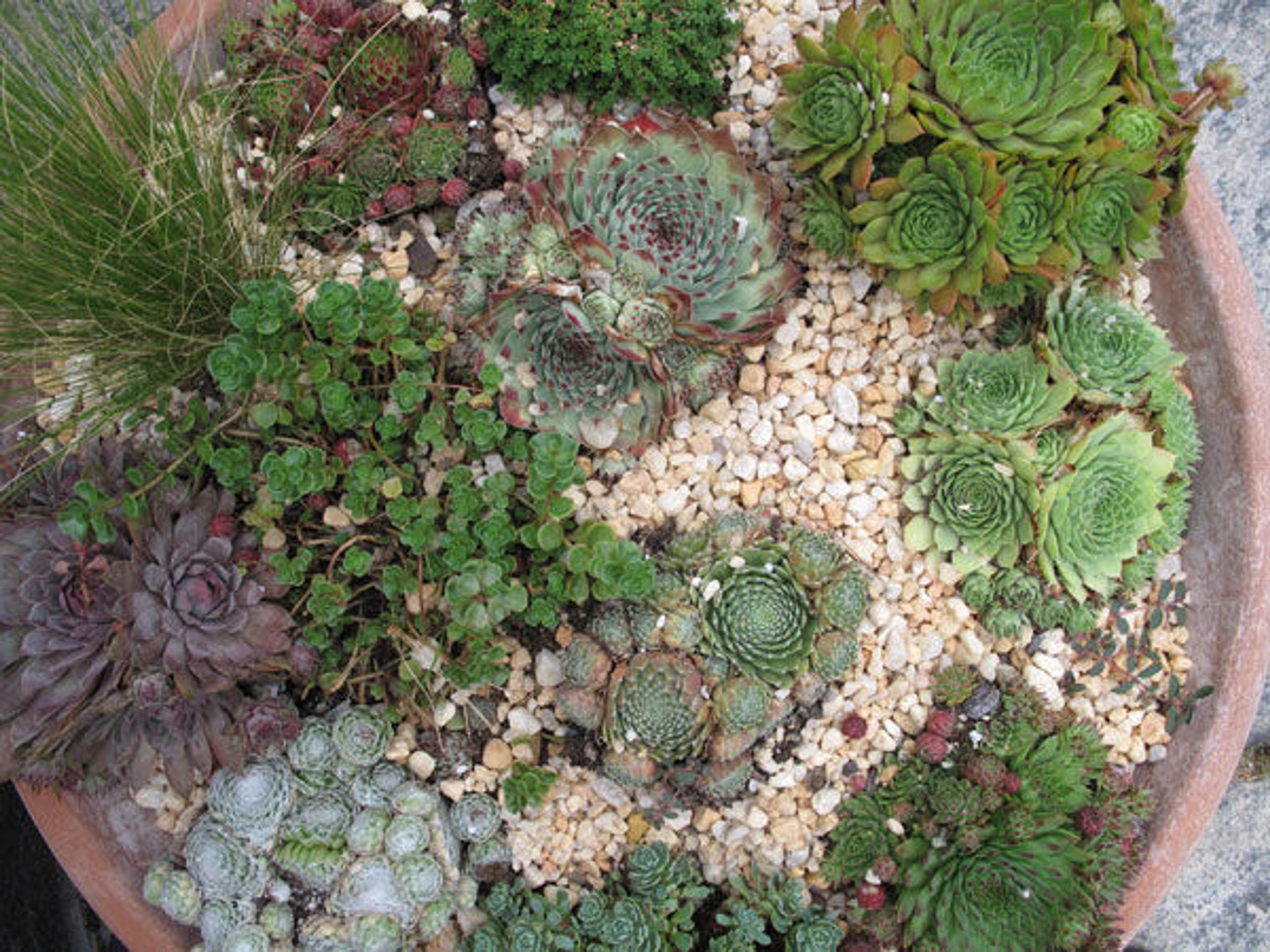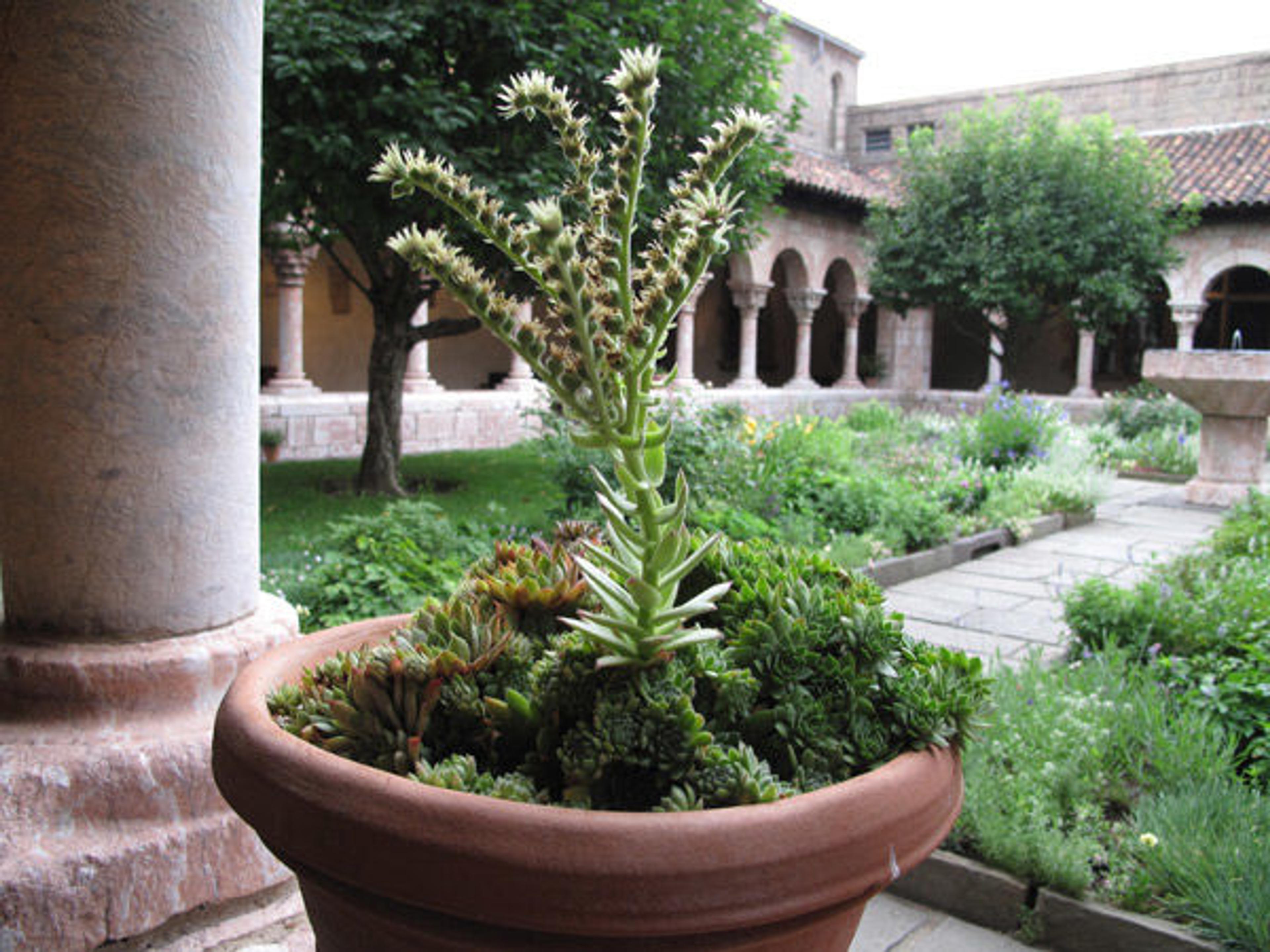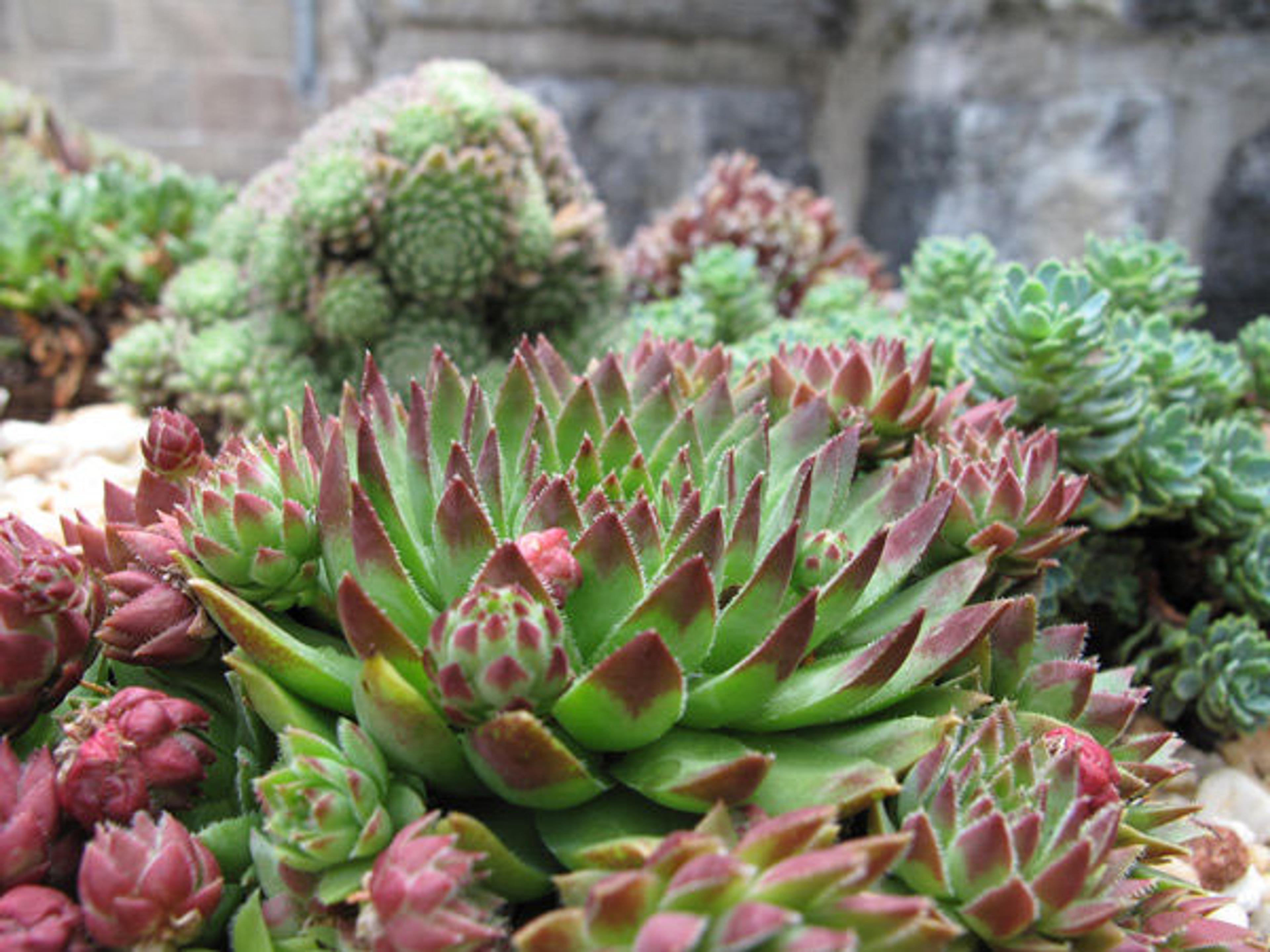Up on the Rooftops

View southwest from the tower at The Cloisters on October 29, 2012, as Hurricane Sandy approaches. Cuxa Cloister garden is in the foreground, relatively protected from extreme weather. The Museum's setting high above the Hudson River is spectacular, but it also exposes us to high winds and lashing rain from all directions. Happily, and thanks to a number of staff who kept watch throughout the storm, we made it through without significant damage. Photograph by Andrew Winslow
«A midsummer storm sweeping off the Hudson River and lashing the buttresses of The Cloisters is a dramatic sight. Perched on a rocky outcrop with sweeping views across the river to the still-unspoiled Palisades, there is little shelter from the winds that batter the walls. This summer, we decided to strengthen our defenses against the gales and lightning with a little bit of medieval protection.»
Houseleek (Sempervivum tectorum) is a species that, to the medieval mind, had the power to ward off lightning from the rooftops. Luckily, this succulent species thrives on neglect and is at home on the roof tiles and slates of old stone buildings. We are trying to utilize it along a windy and dry terrace of the Museum that looks west over the river.

Sempervivum with Sedum, Nasella, and Herniaria. Photograph by Caleb Leech
Sempervivum is a popular, ornamental species with thousands of cultivars and amusing common names. "Welcome-home-husband-though-never-so-drunk," "Bollock's eye," and "Old man and old woman" are a few of the more colorful names (Watts, 202). Of note, the widely accepted common name, houseleek, likely does not arise from a belief that it would fix a leaky roof but, rather, from the Anglo-Saxon leác, which means an herb or garden plant. Thus, the name is literally "houseplant" (Grieve, 422).
Sempervivum was perhaps more highly regarded in antiquity and medieval times than now. (See, for example, a fragment with a Sempervivum motif in the Museum's collection.) The Romans cherished them and cultivated them in vases before their houses. Charlemagne ordered it to be grown on the roofs of houses, possibly as insurance against the wrath of the heavens (Grieve, 422). This supernatural attribute is evidenced by another of its common names, Jove's Beard, which references its ancient association with the Roman deity Jupiter, god of the sky, whose implement was the thunderbolt. The dramatic arching flower stalks were also thought to resemble the beard of the god. Interestingly, the genus Sempervivum is monocarpic, indicating that it will only flower once and, in setting seed, will perish.

Flowering Sempervivum. Photograph by Caleb Leech
Fortunately, besides producing seeds, Sempervivum produces multiple offsets. These "chicks," also described commonly as "hen and chicks," are produced on stolons and prove to be an effective method of propagation. On rooftops, the chicks will roll or slide into an advantageous position and form roots of their own.

Jovibarba with Sempervivum. Photograph by Caleb Leech
In addition to its decorative, symbolic, and magical qualities, Sempervivum was highly valued for its medicinal properties. Dioscorides included the species in his Materia Medica, attributing the name Sempervivum (meaning ever-living) to its evergreen leaves. The specific epithet, tectorum, refers to the plant's preference for rooftops. In keeping with its power to ward off lightning, and in some accounts fire, it was thought to have a cooling effect and was prescribed for inflammations of the skin such as the dreaded skin infection "St. Anthony's fire" (Gunther, 485). Hildegard von Bingen also regarded the houseleek as a cooling herb but said it is not useful to eat, for it would cause a person with normal libido to "be on fire with desire" (Hildegard, 27).
On the other hand, Culpepper recommends drinking "a posset made of the juice of Houseleek" to cool the temper. Gerard's herbal also supports its use as an anti-inflammatory, stating, "The juice of Housleeke, garden Nightshade, and the buds of Poplar make the most singular Populeon that was ever used in Surgerie" (Gerard, 125).
While I haven't used houseleek for any topical remedies, it is interesting to note its combination with the buds of the European Populus species, which contain the anti-inflammatory and analgesic agent salicin (Van Wyk, 252).
Sources
Gerard, John. Leaves from Gerard's Herbal Arranged for Garden Lovers by Marcus Woodward. New York: Dover Publications, 1969.
Gunther, Robert T., ed. The Greek Herbal of Dioscorides. Translated by John Goodyer. New York: Hafner Publishing, 1968.
Grieve, Maude. A Modern Herbal. 2 vols. New York: Dover Publications, 1971.
Hildegard of Bingen. Physica. Translated by Patricia Throop. Rochester, VT: Healing Arts Press, 1998.
Van Wyk, Ben-Erik. Medicinal Plants of the World. Portland, OR: Timber Press, 2004.
Watts, D.C. Elsevier's Dictionary of Plant Lore. Amsterdam: Elsevier, 2007.
Caleb Leech
Caleb Leech is the managing horticulturist at The Met Cloisters.